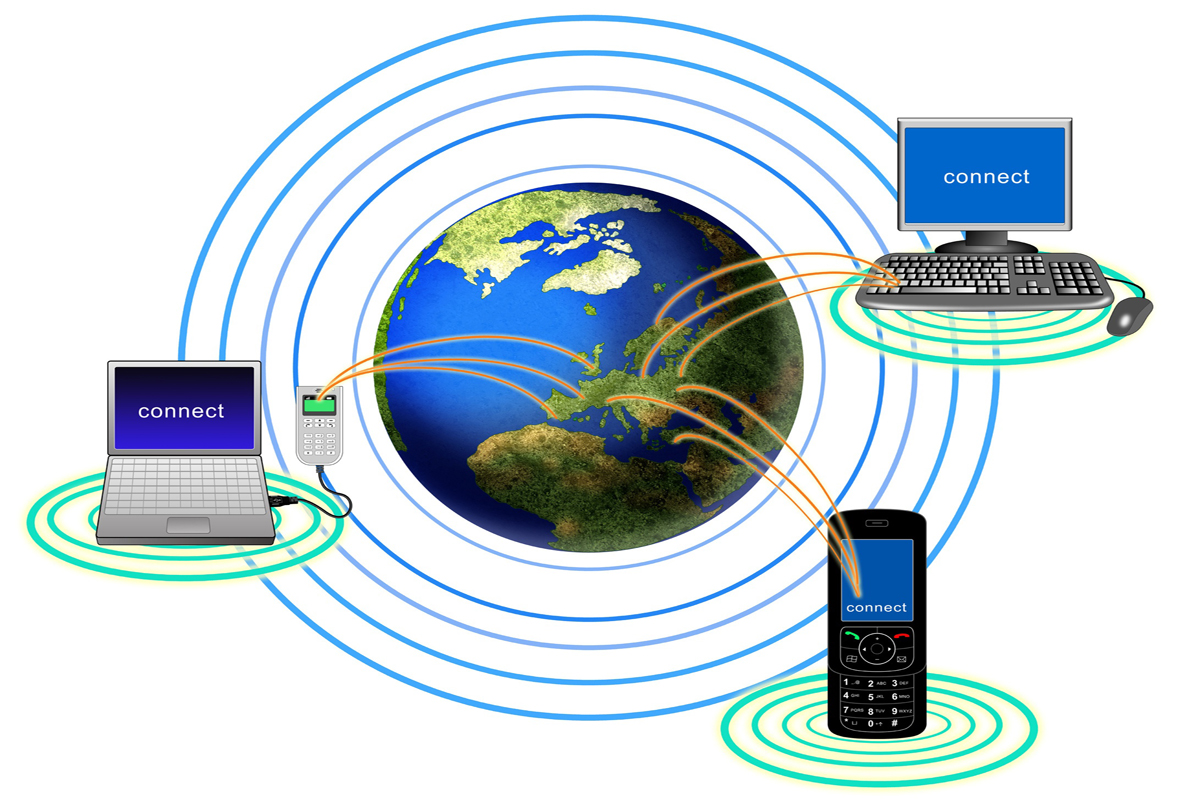Software Defined Networking: A quick guide
SDN security revealed to be at the forefront of Windows Server 2019


Latest news:
07/09/2018: SDN security at the forefront of Windows Server 2019
Software-defined networking (SDN) security capabilities will be a prominent feature of the upcoming Windows Server 19, Microsoft has revealed, with the Redmond giant including the technology in its list of top 10 networking features.
In a Networking Blog post, the firm detailed the additional SDN security benefits and ultimately placing SDN at number 4 in its list of the top ten networking features of the new server.
"Windows Server 2019 SDN delivers many features to increase customer confidence in running workloads either on-premises or as a service provider in the cloud," wrote Greg Cusanza, principal program manager lead at Microsoft. "These security enhancements are integrated into the comprehensive SDN platform that our customers have already been using since Windows Server 2016."
The new features include automatic subnet encryption for improved protection against data theft and tampering, as well as firewall logging that Microsoft says works with the Hyper V host and allows users to better analyse performance.
The new server also builds on Windows Server 2016's ACLs, with automatic application to logical subnets allowing users to restrict access to infrastructure machines in more easily-managed way.
There's also virtual network peering for improved communication between virtual networks, as well as IPv6 support.
ChannelPro Newsletter
Stay up to date with the latest Channel industry news and analysis with our twice-weekly newsletter
What is Software Defined Networking?
Software Defined Networking could radically change how we intend to connect the 50bn digital devices that some vendors predict will be on planet Earth by 2020.
Although implemented in different fashions, SDN essentially removes the control, data and management planes that are normally hardwired into firmware and instead places them within a software layer.
The technology started to gain traction in the late 1990s and became more prominent in 2005 when a Stanford University thesis by Martin Casado codified a number of strands of research into a coherent vision. Casado later went on to found Nicira Networks, an early SDN pioneer.
In the background, a number of innovators were springing up, both as start-ups and as projects within established vendors. Yet with the acquisition of Nicira by VMware, and the ancillary purchases of Xsigo by Oracle and LineRate Systems by F5, brought into sharper focus the potential.
The benefit is more flexibility around how you configure and operate the network. Another potential advantage is that instead of buying big vendor boxes from the likes of Cisco, HP, and Juniper Networks, you can use dumb switches and routers from whomever and just use a common SDN layer from the likes of BigSwitch and Cumulus Networks.
Yet the theory and the practice is very different. Cisco, the undisputed king of networking tech, would rather you didn’t and its objections are pretty sound. Firstly, SDN is still not a true standard and even the real world customers who have dabbled in SDN still have a truck-load of Cisco and tier 1 class vendor products.
The reason is that a highly engineered core switch is incredibly well-designed for the current network environment and delivers the mission critical workloads that enterprises and services providers demand. Also, the skill set to operate all this kit is based on Cisco’s training and certification hegemony. There are some outlier examples that show the SDN potential; Facebook and possibly Google that have developed their own homebrew network hodgepodges but these are not your typical environments.
HP is taking a different approach and acquiring companies to boost its SDN offerings for network functions virtualisation (NFV). For example, its tie-up with open SDN controller platform ConteXtream adds a new string to its bow, allowing service providers to create a more flexible and programmable network through an SDN/NFV model.
Saar Gillai, SVP & GM, NFV HP explains how the acquisition will boost HP's leadership in the NFV market: "Communications Service Providers (CSPs) face exploding network traffic on their infrastructure and declining margins. At the same time, they must compete with over-the-top (OTT) players who can be more agile, flexible and able to roll out revenue-generating services much faster.
"One of the ways CSPs can gain the agility required to compete is to move networking functions from monolithic, proprietary appliances to open, cloud-based architectures."
Additionally, the acquisition will help HP contribute additional capabilities to the OpenDaylight community and delivery of an open source-based, carrier-grade SDN controller.
How does it affect the market?
According to research by IHS, the data centre and enterprise SDN market is set to grow more than 15-fold by 2019.
Specifically, the research firm said the in-use software-defined networking market including equipment such as ethernet switches and controllers will increase from $781m last year to a whopping $13bn in 14 years from now.
The company said the time for full transition will be 2016, when enterprise lab testing environments will become live production deployments this year.
Cliff Grossner, Ph.D., research director for data centre, cloud and SDN at IHS said: "“The SDN market is still forming, and the top market share slots will change hands frequently, but currently the segment leaders are Dell, HP, VMware and White Box.
"SDN will cross the chasm in 2016, with SDN in-use physical Ethernet switches accounting for 10% of Ethernet switch market revenue.”
To date, around 100+ organisations have joined one of the various SDN industry groups. The most neutral is based around Openstack and its Openflow subset which has gained broad vendor support, including networking products from Cisco, HP, Brocade, Juniper and Extreme Networks. However, it is still only a protocol like HTTP and it doesn’t actually dictate how a SDN deployment should be designed.
In reality, nobody is yet even trying to deploy SDN that mix and matches different vendors. The current route if you want to head down SDN boulevard with conviction is either to go full software or pick your vendor and stay within their respective stacks.
Thankfully, it’s not a one horse race. Cisco, Juniper, Brocade, and to a lesser degree HP, have SDN visions and set of products to execute. Yet, is there a real opportunity? A 2013 Software Defined Networking (SDN) Market Sizing Report estimated that direct SDN technologies had sales of around $250m in a market worth more than $40bn. In the intervening two years, the market has grown with IDC saying it may be worth $960m in 2014, although it’s unclear where the data for this estimate comes from.
Channel Pro opinion
For channel partners the biggest hurdle is not the concept or prevalence of the technology. The big issue is actually finding a customer that needs SDN. Not only do they need it, they are prepared to rip and replace perfectly adequate tin for the promise of digital networking nirvana.
Not many service providers or resellers have the Facebook scale exceptions or the on-tap experts to eke out the benefits. If there would be a safe path, then understanding SDN in the context of virtualisation through VMware NSX is a good training route.
Another option is preparing for the upgrade cycle of a “big fish” client. Spending time to send your best and brightest engineers on an SDN course that all the big vendors are pushing out is probably a good gamble. When the tenders start to emerge that request a level of SDN, without the skill set and knowledge, as a reseller, you are out of the RFP.
Is SDN a game changer? Yes. Is it a game changer like virtualisation? NO! The burn cycle, like much of networking is much longer and you can’t escape from the current evolution that you have to rip and replace which is always a hard sell. Get ready but don’t wet the bed if your SDN credentials are not first rate.
Dan is a freelance writer and regular contributor to ChannelPro, covering the latest news stories across the IT, technology, and channel landscapes. Topics regularly cover cloud technologies, cyber security, software and operating system guides, and the latest mergers and acquisitions.
A journalism graduate from Leeds Beckett University, he combines a passion for the written word with a keen interest in the latest technology and its influence in an increasingly connected world.
He started writing for ChannelPro back in 2016, focusing on a mixture of news and technology guides, before becoming a regular contributor to ITPro. Elsewhere, he has previously written news and features across a range of other topics, including sport, music, and general news.
-
 Google tells some remote workers to return to the office or risk losing jobs
Google tells some remote workers to return to the office or risk losing jobsNews Google has warned remote workers will need to return to the office or else lose their jobs, according to reports.
By Ross Kelly
-
 IBM puts on a brave face as US government cuts hit 15 contracts
IBM puts on a brave face as US government cuts hit 15 contractsNews Despite the cuts, IBM remains upbeat after promising quarterly results
By Nicole Kobie